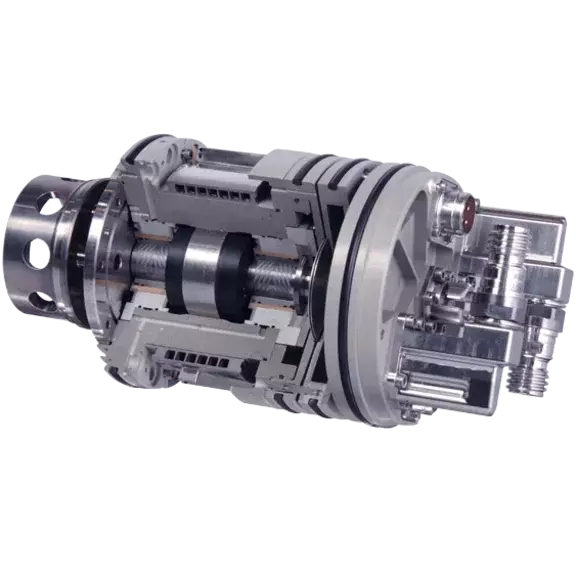Turbo-Brayton cryo-freezers
One of the most reliable systems on the International Space Station
Turbo-Brayton cryo-freezers use a high-speed turbine whose active elements are mounted on a single shaft. This specificity produces compact, efficient cryo-freezers, that generate very few vibrations: ideal for space cryogenics.
The turbo-engines are made up of a wheel that expands the cycle gas (nitrogen or helium), a compressor wheel that compresses it, an electrical motor, a set of contact-free bearings, and three exchangers to cool the gas that exits the compressors and extract the refrigeration capacity. This technology can be used for thermal regulation applications at temperatures of more than 300 K.
The performances of the Turbo-Brayton MELFI cryo-freezer
- Refrigeration capacity ǀ 100 W at 190 Kelvin
- Electric power ǀ 800 W
- Mass ǀ 8.5 kg
80 000 revolutions per minute for MELFI during more than 80 000 hours to cool down to -80°C
Key Benefits
- Exceptional reliability ǀ the turbo-engine is made up of rotating parts with no contact or friction: this design has enabled it to operate maintenance-free for more than 300,000 hours
- Reduced vibrations ǀ the remarkably low level of vibrations (a few µg at 1,500 Hz) makes these machines compatible with the specifications of space microgravity
- A high level of versatility ǀ these cryo-freezers can be easily adapted to every need; their power can be regulated finely over a wide range of speeds without adversely affecting efficiency
- Remote cold production ǀ cold production can be centralized while the coolant can travel over large distances, meaning the turbo-engine can be located far from the zone that needs cooling
- Adaptable size ǀ the size of the exchanger can be adapted to the specific use
- Variable consumption ǀ The Brayton cycle cryo-freezer's engine speed adapts automatically the temperature you seek to attain.
Contact Us
For more information, find on this page your key contacts and our contact form.
Space
Air Liquide has the ambition, the will and the expertise to engage in all the major new international challenges: electric propulsion, more competitive launch vehicles, the constellation of satellites, life in space, and more.
